This text provides a comprehensive guide to maintaining and optimizing bathroom plumbing. It emphasizes the importance of regular checks and DIY repairs for common issues like leaks, clogged drains, and low water pressure, saving homeowners money and hassle. While DIY methods are recommended for minor problems, complex or emergency situations require professional plumbers for accurate solutions and hazard mitigation. The text also promotes energy-efficient fixtures and appliances to reduce costs and highlights budget-friendly upgrades like thrift store finds and DIY tile work. Regular maintenance, inspections, and preventive measures are highlighted as crucial for long-term bathroom plumbing health.
Looking to transform your bathroom without breaking the bank? This comprehensive guide explores affordable plumbing solutions for every budget. From identifying common issues to understanding the pros and cons of DIY versus professional help, we’ve got you covered. Discover cost-saving tips on fixtures, appliances, and upgrades, plus learn preventive measures to keep your bathroom’s plumbing in top shape.
Understanding Common Bathroom Plumbing Issues
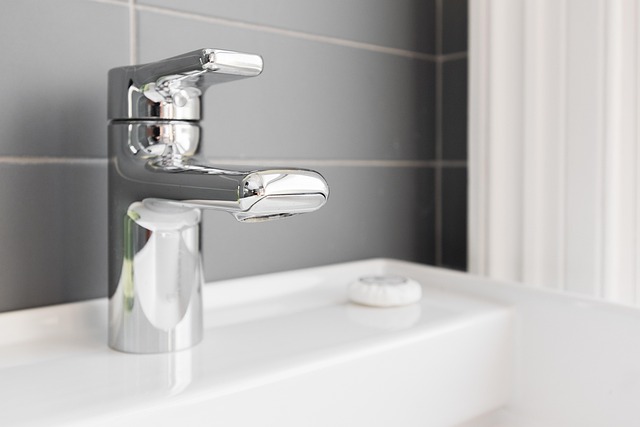
Many common bathroom plumbing issues can often be overlooked or ignored until they escalate into bigger problems. Knowing the typical troubles that arise in this area is essential for homeowners to maintain their spaces efficiently. One frequent issue is leaky faucets, which not only waste water but also contribute to elevated water bills. Another prevalent problem involves clogged drains, causing slow drainage and potential overflows. These issues can be addressed through regular maintenance and simple DIY repairs, such as replacing worn-out washers or using natural drain cleaners.
Additionally, low water pressure is a widespread concern that affects both the functionality of fixtures and the overall showering experience. This problem might stem from mineral buildup in pipes or aerator issues. Addressing these bathroom plumbing problems early can save homeowners money on potential repairs and ensure their bathrooms remain functional and enjoyable spaces.
Budget-Friendly Repairs and Maintenance Tips
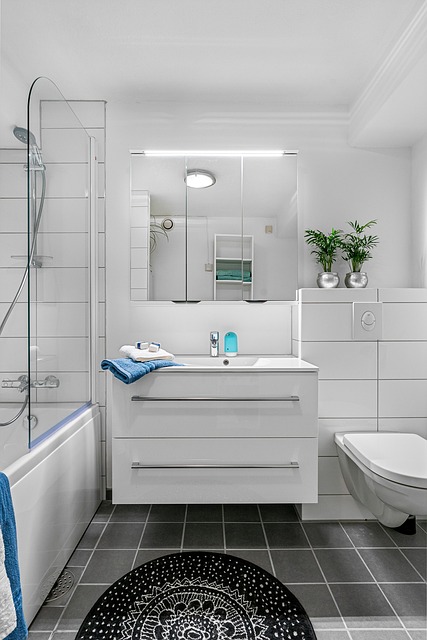
When it comes to bathroom plumbing, repairs and maintenance don’t have to break the bank. There are several budget-friendly tips that homeowners can implement to keep their bathrooms in top condition without overspending. Start with simple checks like inspecting faucets for leaks and tightening any loose parts. Regularly replacing toilet flappers is an easy, cost-effective way to improve water efficiency and prevent costly clogs.
Additionally, consider using aerators on faucets to reduce water flow without compromising pressure. For larger issues, such as pipe leaks or clogged drains, DIY kits are readily available at affordable prices. Remember, proactive maintenance can save you money in the long run by preventing small problems from becoming bigger, more expensive headaches.
DIY vs Professional Plumber: When to Call an Expert
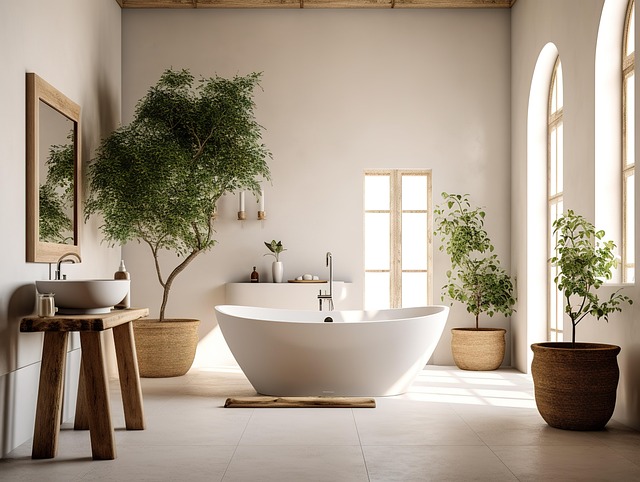
When it comes to bathroom plumbing issues, many homeowners wonder if tackling the problem themselves (DIY) is a viable option. While some basic repairs and maintenance tasks can be done by amateurs, complex or critical bathroom plumbing problems often require the expertise of a professional plumber. DIY methods can save costs, but they may lead to further damage or inefficient fixes if not executed correctly. A professional plumber ensures accurate identification of the problem, offers long-lasting solutions, and avoids potential hazards that could arise from incorrect repairs.
Calling an expert is particularly crucial for plumbing emergencies, such as burst pipes or severe clogs, as prompt action is essential to prevent water damage and costly repairs. Additionally, if your bathroom plumbing involves intricate installations, unusual layouts, or the use of specialized fixtures, a professional plumber with specialized knowledge and tools will be better equipped to handle these unique challenges effectively.
Efficient Fixtures and Appliances for Cost Savings
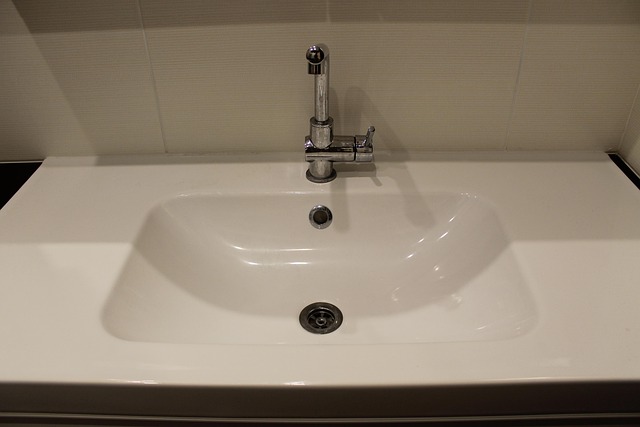
In the realm of bathroom plumbing, one of the most effective strategies for cost savings lies in the efficient use of fixtures and appliances. Modern technology offers a range of options designed to reduce water and energy consumption without compromising performance. Low-flow showerheads, for instance, can significantly lower hot water usage while still providing a satisfying shower experience. Similarly, high-efficiency toilets (HETs) use advanced flushing mechanisms to conserve water, translating to substantial savings on utility bills over time.
Beyond individual components, smart integration of these efficient fixtures can create a seamless and cost-effective bathroom plumbing system. For example, combining a smart thermostat with efficient appliances allows for precise temperature control and energy management. This not only reduces waste but also contributes to a more comfortable and environmentally friendly bathroom experience. By adopting these strategies, homeowners can enjoy the benefits of modern amenities while optimising their bathroom plumbing for both functionality and affordability.
Creative Ways to Upgrade Your Bathroom on a Dime

Tired of your dated bathroom, but short on funds? Don’t worry, there are plenty of creative ways to upgrade your bathroom plumbing on a dime. A simple switch from outdated fixtures to sleek, modern ones can instantly transform the space. Consider shopping at thrift stores or online marketplaces for gently used, yet stylish, faucets, showerheads, and light fittings. This not only saves money but also adds a unique, one-of-a-kind touch to your bathroom.
Another cost-effective solution is to refresh your bathroom tiles. Instead of replacing them entirely, try DIY tile painting or sealing. You can find affordable paint designed for tiles that allows you to create new patterns or simply give your old tiles a fresh coat of color. For sealed coatings, they not only protect your tiles but also make cleaning easier and can make your bathroom look brand new. These simple updates can completely change the ambiance of your bathroom without breaking the bank.
Preventive Measures for Long-Term Plumbing Health
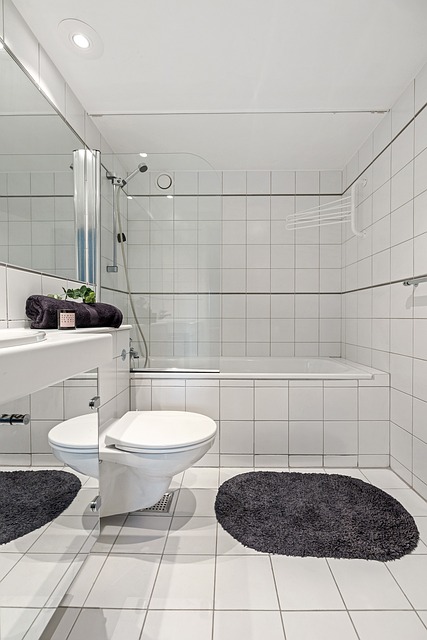
Regular maintenance is key to ensuring optimal bathroom plumbing health over time. Start by inspecting pipes for any signs of damage, corrosion, or leaks on a periodic basis. Simple preventive measures like sealing joints and fittings, insulating exposed pipes from extreme temperatures, and clearing drains of hair and grease can significantly reduce the risk of costly clogs or bursts.
Additionally, keeping an eye on water pressure levels and promptly addressing any unusual fluctuations can help prolong the lifespan of your plumbing system. Regularly flushing toilets, especially in older homes, and using efficient showerheads and aerators can also contribute to long-term savings and reduced maintenance needs for your bathroom plumbing.
